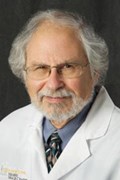 The University of Iowa is on a mission to save lives—and to become the nation’s next HEARTSafe Campus.
The University of Iowa is on a mission to save lives—and to become the nation’s next HEARTSafe Campus.
- Sudden cardiac arrest is the third leading cause of death in the United States, affecting 350,000 Americans annually.
- People of all ages can experience sudden cardiac arrest; four people have been saved by CPR on the UI campus since 2015, including in a dormitory and the CRWC.
- The overall survival in the U.S. is 10 percent, but the odds that an individual survives can be markedly improved if CPR starts within the first few minutes, followed, if indicated, by defibrillation.
- Mortality increases by 10 percent with each passing minute.
- Immediate CPR doubles or triples the chance of survival; defibrillation will double that figure.
To make that happen, UI administrators are encouraging faculty, staff, and students to take advantage of CPR training offered by the university, including instruction on the use of Automatic External Defibrillators, or AEDs.
The effort, part of the UI’s Richard E. Kerber HEARTSafe Initiative, seeks to help the UI meet certification standards for the HEARTSafe Campus designation by the National Collegiate Emergency Medical Services Association.
The designation would make the UI the first campus in the state to be designated a HEARTSafe Campus, and just the second Big Ten university, after the University of Illinois.
President Bruce Harreld has set a target of qualifying for the HEARTSafe Campus designation during the spring 2019 semester, and hopes that UI community members will take advantage of the available CPR training opportunities, as the staff in the President’s Office have done.

“The UI is dedicated to ensuring the safety of everyone on campus, and the Kerber CPR Initiative is giving our university community the knowledge and training we need,” Harreld said. “I encourage our students, faculty, and staff to help us achieve designation as a HeartSafe Campus to demonstrate our commitment to safety at Iowa.”
- Students can receive training through Student Health and Wellness by signing up at https://studenthealth.uiowa.edu/wellness/red-watch-band.
- Campus units not in UI Hospitals and Clinics can arrange for CPR/AED trainings by visiting https://police.uiowa.edu/training-programs on the Department of Public Safety web site, or calling 319-335-5022. There is a small fee for receiving these trainings.
Most undergraduates received training in high school. All students, including graduate students, are encouraged to refresh their knowledge and skills by taking advantage of training offered by Student Health and Wellness.
In addition to providing CPR training opportunities, the UI is working to ensure that all campus buildings are equipped with AEDs. View a map of buildings with AEDs. The Department of Public Safety has made sure that AEDs are in all medical buildings, and the College of Liberal Arts and Sciences has placed AEDs in all of the campus buildings housing the college's departments and programs.
The College of Liberal Arts and Sciences administration has also provided funding for CPR/AED training opportunities for its staff, and the Department of History and the Obermann Center for Advanced Studies have risen to the challenge by providing training for its faculty and staff.
CLAS Associate Dean Marc Armstrong explained the college's motivation for providing leadership in the initiative.
"By funding the purchase of the AED devices, as well as a series of CPR training sessions, the College of Liberal Arts and Sciences has been very pleased to cooperate with the Richard E. Kerber HEARTSafe Initiative," Armstrong said. "We want to help make the vision of a HEARTSafe Campus a reality—and above all, we want to save lives."
The Richard E. Kerber HEARTSafe Initiative was launched in 2017, spearheaded by Linda Kerber, professor emerita of history and widow of Richard Kerber. Richard Kerber, who was a faculty member in UI Health Care’s Division of Cardiology for more than 45 years and was a pioneer in CPR research, died in 2016 at age 77.